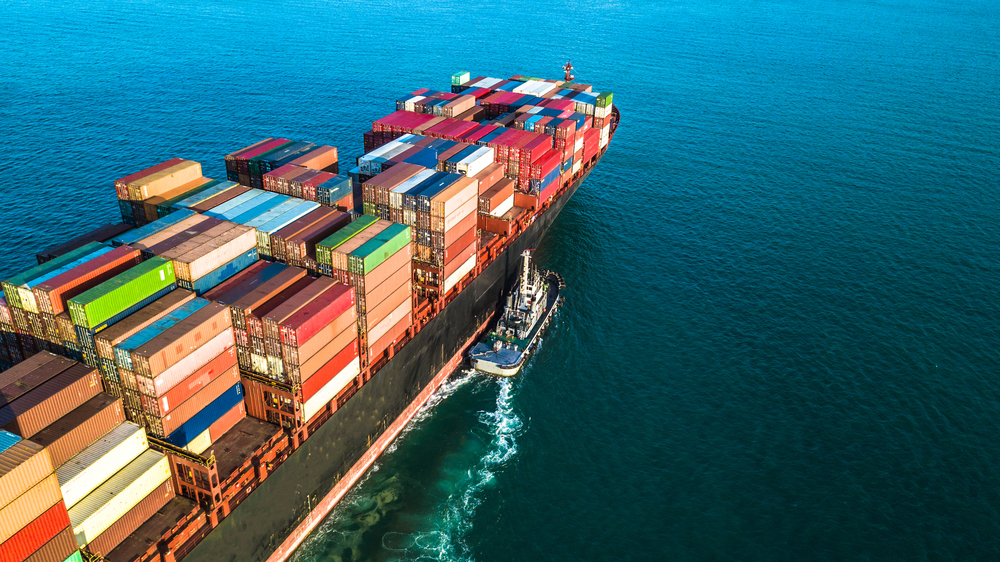
Email Coverage and Response Time Update: Northern Border Crossings
July 16, 2023
An ILWU Agreement Has Been Reached
September 5, 2023July Import Volumes Reflect Post-COVID Stability and Future Growth
Descartes Reports Encouraging Import Trends for the US Economy
Descartes, a prominent data analysis firm, recently reported that imports to all U.S. ports totaled 2,187,810 twenty-foot equivalent units in July. This marks a 14% decline compared to the previous year, but it is offset by a 5% sequential increase from June. More importantly, these figures are virtually unchanged from the levels observed in July 2019, demonstrating resilience within the market.
While this data might appear as if imports are plunging, July’s import metrics being down are attributed to the singular import surge by COVID, an anomaly that ceased in late 2022. Thus, the current decline is no longer novel or alarming. In fact, Descartes revealed that ocean imports in July 2023 saw a 5% increase compared to June, while holding steady in comparison to July 2019.
Amidst the post-pandemic economic landscape, July’s import figures continue to demonstrate a return to normalcy after COVID, setting the stage for anticipated growth.
A more accurate depiction of import status should more likely sound like, “Imports Unchanged Compared to Pre-Pandemic Levels”. Although lacking in double-digit declines and ominous undertones, this revised title captures the true essence of the news. The reality is that the US Containerized import volume is stabilizing, signaling a healthy state of economy. Import data does not exhibit signs of consumer weakness or an imminent recession.
Comparing the first seven months of this year to the same period in 2019, US imports have risen by 1.7%. This consistent performance is affirmed by Descartes, which asserts that import volumes are still in line with 2019 standards.
A closer look at specific sources of imports reveals that China and South Korea registered significant month-on-month gains in July. China’s imports surged by 36,818 TEUs, while South Korea’s imports grew by 11,418 TEUs. Meanwhile, certain US ports experienced notable fluctuations: Savannah, Georgia saw a gain of 47,900 TEUs, followed by New York/New Jersey with an increase of 43,169 TEUs. However, Los Angeles experienced a drop of 68,874 TEUs during the same period.
The National Retail Federation’s Global Port Tracker, which employs data from 12 major US ports, corroborates the positive import trends. Although final numbers for July are pending, early estimations indicate volumes of approximately 1.91 million TEUs – a 13% decline from the previous year, but consistent with levels from July 2019. These figures align with expectations for future growth, as the tracker forecasts an increase to 2.03 million TEUs this month.
Predictions for the remainder of 2023 remain optimistic. Despite a projected 13% decrease from last year’s exceptional volumes, imports are anticipated to surpass pre-pandemic levels by 2% (compared to 2018) and 3% (compared to 2019). Jonathan Gold, Vice President for Supply Chain and Customs Policy at the NRF, anticipates a smooth shipping season in preparation for the upcoming winter holidays.
Ben Hackett, founder of Hackett Associates, notes that current imports have not fully matched rising sales due to retailers working through accumulated inventory from the past 12 to 18 months. However, this inventory depletion is expected to lead to a resurgence in cargo growth.
Offering further evidence of a promising import outlook, FreightWaves SONAR’s booking index indicates robust import activity in the coming weeks. The index’s measurement of bookings from overseas ports reveals a 36% increase from May’s low point and a 14% rise from the same period in 2019. These indicators suggest that healthy import levels will persist throughout August and into September, supported by ongoing strong bookings.
In conclusion, July’s import statistics reflect a return to stability for the US economy, as the effects of the pandemic-driven import surge wane. Encouraging trends from various sources indicate a positive trajectory, setting the stage for future growth and a favorable shipping season.
For any questions regarding these updates, please contact your Western Overseas representative.





